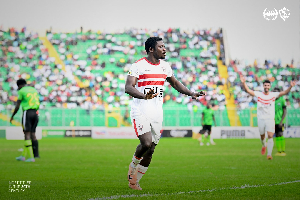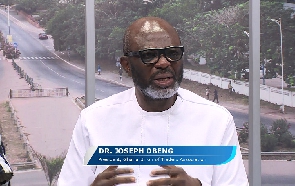- Home - News
- TWI News | TV
- Polls
- Year In Review
- News Archive
- Crime & Punishment
- Politics
- Regional
- Editorial
- Health
- Ghanaians Abroad
- Tabloid
- Africa
- Religion
- Election 2020
- Coronavirus
- News Videos | TV
- Photo Archives
- News Headlines
- Press Release
General News of Thursday, 17 January 2008
Source: GNA
KATH surgeons separate Siamese twins

Kumasi, Jan.17, GNA - A team of surgeons at the Komfo Anokye Teaching Hospital (KATH) have successfully separated Siamese twins who were joined together in the abdomen.
The twins were delivered on December 26, 2007 by a 30-year-old mother of two at Sefwi-Akaateso in the Western Region and were operated upon to separate them on January 8, this year at KATH.
It took the surgeons led by Professor Francis A. Abantanga, Head of Surgery Unit of KATH about three hours to separate them. Briefing newsmen in Kumasi on Thursday, Professor Abantanga said the babies who were born through normal delivery had their abdomen joined together and the surgeons had to cut through the liver to separate them. He said they encountered no major problems and the babies were very healthy adding that, they would be discharged from the hospital by Friday January 18, 2008.
Professor Abantanga said Siamese situation comes about as a result incomplete or incorrect division of the egg that formed the foetus. This, he said, makes it impossible for the babies to be born separately as twins and debunked the nation that Siamese are caused by witchcraft. Dr Anthony Nsiah Asare, Chief Executive of KATH, said the successful operation of the Siamese was an indication that the hospital was moving towards its goal of becoming a centre of excellence in medical care. He said the hospital would continue to pursue policies and programmes that would help propel it to achieve its mandate.
In a related development, a team of urologists from the International Volunteers in Urology (IVU) in the USA have joined their counterparts in KATH to perform surgical operations to reconstruct congenital malformations, especially among children.
The exercise formed part of a collaborative programme between IVU and KATH, which started in 2004 to provide training to staff of the hospital and also assist the needy children.
Dr Ken Aboah, Head of the Urology Unit of KATH and leader of the Ghanaian team, said nearly 200 children have had their malformation genitals reconstructed free of charge since the beginning of the programme.
He said about 200,000 dollars worth of equipment and materials had also been donated to the hospital through the programme. Dr Aboah said 40 patients would undergo surgical reconstruction during the current exercise.
He mentioned some of the malformations as bladder extrophy, epispadias, ambiguous genitalia, male and female pseudo-hermaphrodites, testicular feminization, hypospadias and kidney malformation and attributed the causes to phytooestrogens, drugs and infections during the first semester in pregnancy, genetics and familial.
Professor Francis Schneck, of Children Hospital, University of Pittsburg, USA, and Head of the IVU team, said the main objective of the organization was to offer urological services to needy countries, train their staff and give donations of equipment and supplies to needy countries.
He commended urologists in KATH for their good performance and expertise and said the team from the USA was learning a lot from them.










